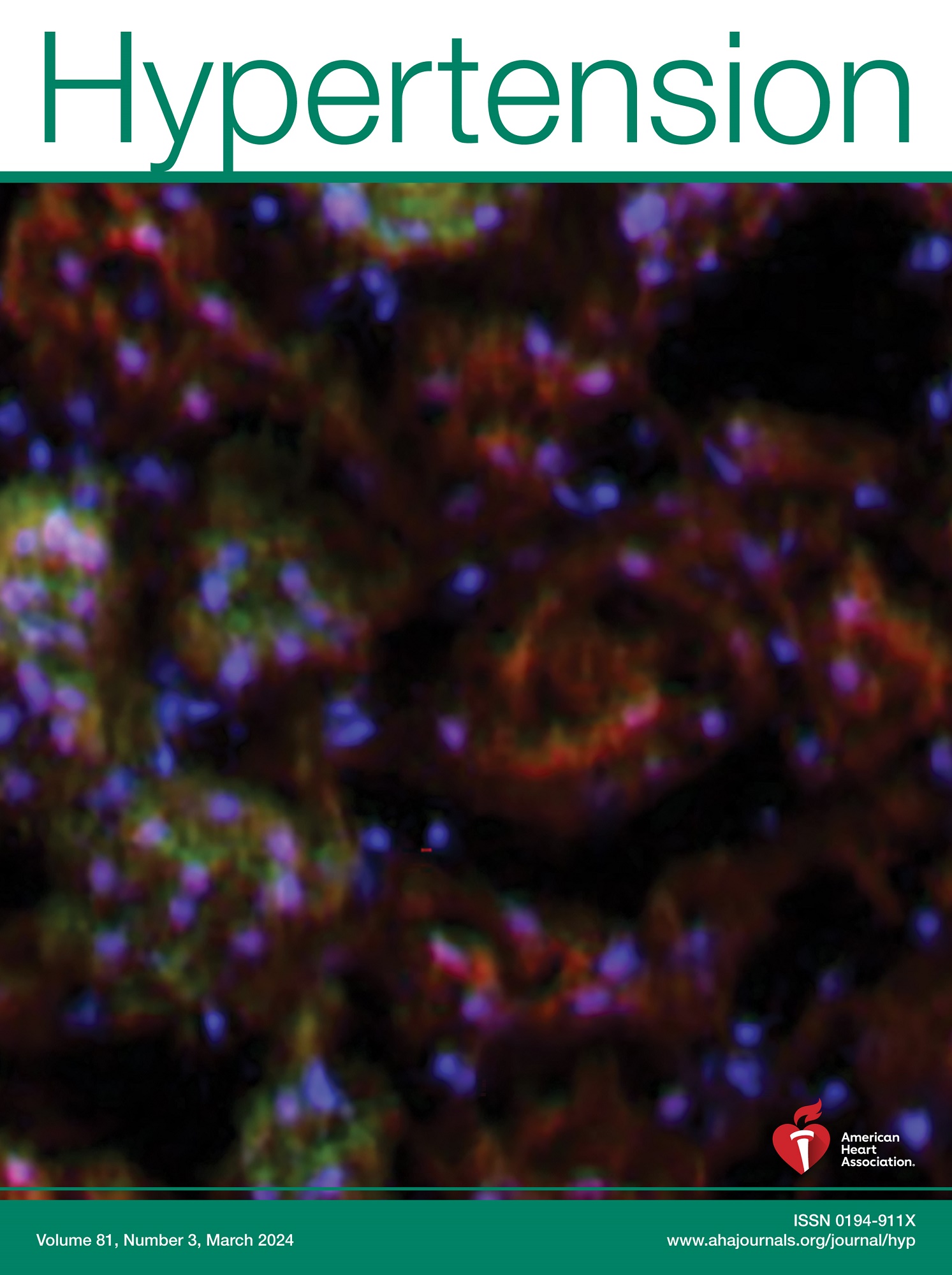限时喂养减轻盐敏感性高血压和肾损害。
IF 8.2
1区 医学
Q1 PERIPHERAL VASCULAR DISEASE
引用次数: 0
摘要
背景:限时进食(TRF)是间歇性禁食的一种,已被证明可以改善血压;然而,关于其对盐敏感(SS)高血压的影响的数据有限。我们假设TRF干预可以减轻高盐饮食的Dahl SS大鼠高血压和肾损害的进展。方法在任意低盐或高盐喂养1周期间记录24小时股骨平均动脉压(MAP),然后在相同饮食的任意喂养或TRF(禁食16小时:随意进食8小时)1周。余弦分析对MAP轨迹进行了分析。在研究的第二周进行了全面的代谢表型分析。钠排泄和肌酐清除率在最后研究日的4小时窗期进行评估。结果高盐组大鼠第1周血压升高。在第2周实施TRF抑制了MAP的进一步增加。活跃期MAP减少是TRF大鼠24小时MAP降低的原因。在服用TRF的大鼠中,禁食期间呼吸交换率降低,但不改变每日钠摄入量或体重。在最后的研究日,高盐TRF大鼠在钠排泄和肌酐清除率方面表现出时间依赖性差异。结论TRF方案在不改变钠摄入量和体重的情况下减轻高盐饮食雄性SS大鼠的高血压和肾损害。如果这些发现在临床上转化,TRF可能为管理SS高血压提供一种替代限盐饮食的方法。本文章由计算机程序翻译,如有差异,请以英文原文为准。
Time-Restricted Feeding Attenuates Salt-Sensitive Hypertension and Renal Damage.
BACKGROUND
Time-restricted feeding (TRF), a type of intermittent fasting, has been shown to improve blood pressure; however, there is limited data on its effects in salt-sensitive (SS) hypertension. We hypothesized that TRF intervention would attenuate the progression of hypertension and renal damage in Dahl SS rats on a high-salt diet.
METHODS
Chronic 24-hour femoral mean arterial pressure (MAP) was recorded during 1 week of ad libitum low-salt or high-salt feeding, followed by 1 week of ad libitum feeding or TRF (16 hours fasting: 8 hours ad libitum) of the same diet. Cosinor analysis was performed on MAP traces. Comprehensive metabolic phenotyping was performed during the second week of the study. Sodium excretion and creatinine clearance were assessed in 4-hour windows over the final study day.
RESULTS
Rats on high salt developed higher blood pressure during week 1. Implementation of TRF during week 2 blunted further increases in MAP. Reduced MAP during the active phase was responsible for the lower 24-hour MAP in TRF rats. In rats on TRF, the respiratory exchange ratio was reduced during fasting without altering daily sodium intake or body weight. On the final study day, high-salt TRF rats exhibited time-dependent differences in sodium excretion and creatinine clearance.
CONCLUSIONS
The TRF regimen attenuated SS hypertension and renal damage in male SS rats on a high-salt diet without altering sodium intake or body weight. If these findings translate clinically, TRF may provide an alternative to a salt-restricted diet for management of SS hypertension.
求助全文
通过发布文献求助,成功后即可免费获取论文全文。
去求助
来源期刊

Hypertension
医学-外周血管病
CiteScore
15.90
自引率
4.80%
发文量
1006
审稿时长
1 months
期刊介绍:
Hypertension presents top-tier articles on high blood pressure in each monthly release. These articles delve into basic science, clinical treatment, and prevention of hypertension and associated cardiovascular, metabolic, and renal conditions. Renowned for their lasting significance, these papers contribute to advancing our understanding and management of hypertension-related issues.
 求助内容:
求助内容: 应助结果提醒方式:
应助结果提醒方式:


